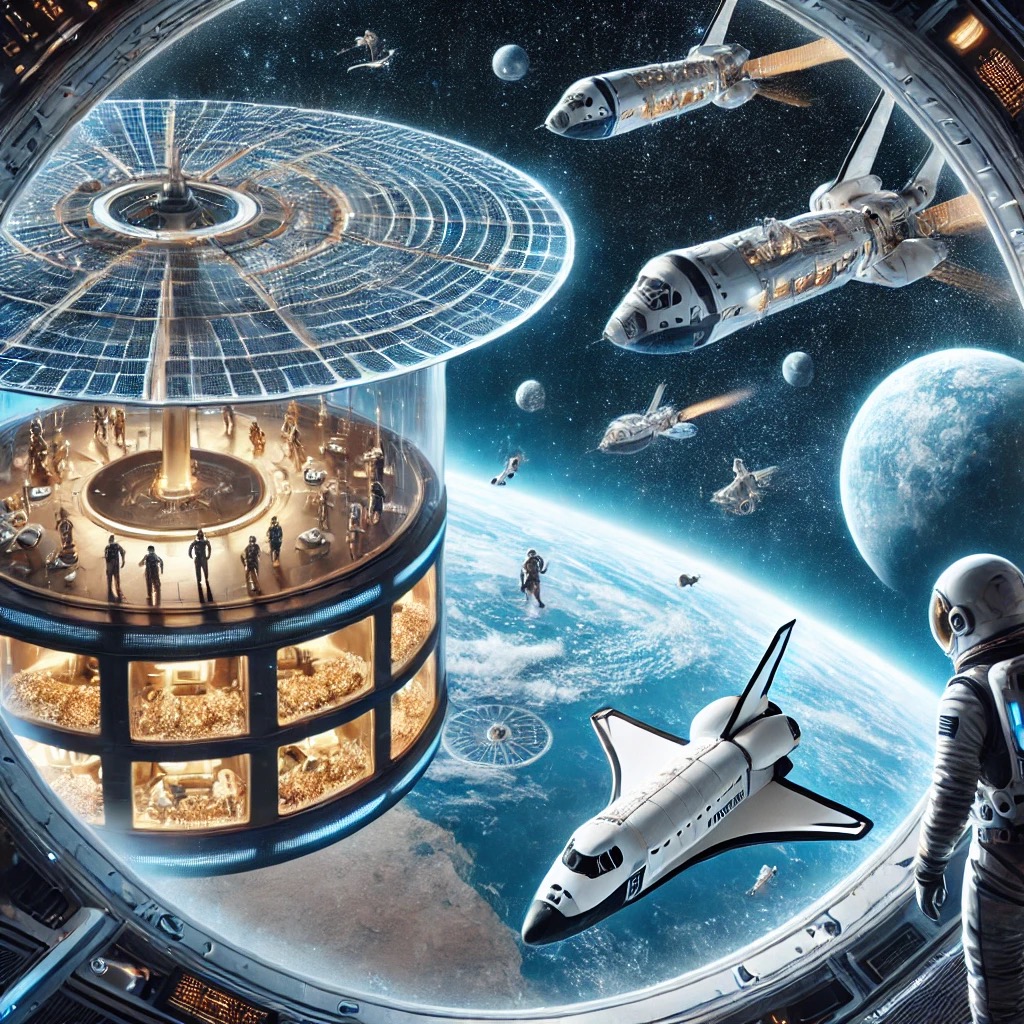The gaming industry is on the brink of a transformative era, driven by advancements in technology that are reshaping how games are created, played, and experienced. From immersive virtual worlds to intelligent AI opponents , the future of gaming promises unprecedented levels of realism, interactivity, and personalization. As technologies like virtual reality (VR) , augmented reality (AR) , artificial intelligence (AI) , and cloud gaming continue to evolve, gamers can expect richer, more engaging experiences that blur the line between the virtual and real worlds.
Below is an exploration of the key trends shaping the future of gaming, their benefits, challenges, and the broader implications for players and developers alike.

1. Immersive Virtual Worlds
a. Persistent, Living Worlds
- Massive, Open Environments : Games will feature expansive, persistent virtual worlds that evolve over time, even when players are offline. These worlds will feel alive, with dynamic ecosystems, weather patterns, and NPC (non-player character) behaviors.
- Cross-Platform Access : Players will be able to seamlessly transition between devices (PC, console, mobile, VR) while exploring these shared worlds.
b. The Metaverse
- Interconnected Universes : The concept of the Metaverse —a collective virtual space where users can interact, socialize, and play—will redefine gaming. Platforms like Roblox , Fortnite , and Decentraland are early examples of this trend.
- Economy and Ownership : Gamers will buy, sell, and trade digital assets (e.g., skins, weapons, land) using blockchain technology and cryptocurrencies, giving them true ownership of in-game items.
c. Hyper-Realistic Graphics
- Ray Tracing and Photorealism : Advances in graphics technology, such as real-time ray tracing, will make virtual worlds indistinguishable from reality.
- Haptic Feedback : Next-gen controllers and wearables will simulate touch, temperature, and resistance, enhancing immersion.
2. AI-Powered Opponents and NPCs
a. Intelligent AI Opponents
- Adaptive Gameplay : AI opponents will learn and adapt to a player’s strategies, providing a constantly evolving challenge. For example, if a player favors stealth tactics, the AI might deploy counter-stealth measures.
- Emotional Intelligence : NPCs will exhibit realistic emotions, body language, and decision-making, making interactions feel more human-like.
b. Procedural Content Generation
- Dynamic Storylines : AI will generate unique quests, missions, and story arcs tailored to individual players, ensuring no two gaming experiences are the same.
- Endless Exploration : Procedurally generated landscapes and environments will keep players engaged for longer periods.
c. Personalized Experiences
- Behavioral Analysis : AI will analyze player behavior to adjust difficulty levels, recommend content, or suggest gameplay styles that align with individual preferences.
3. Cloud Gaming and Accessibility
a. Streaming Services
- Cloud Gaming Platforms : Services like Google Stadia , Xbox Cloud Gaming , and NVIDIA GeForce Now allow players to stream high-quality games without needing expensive hardware.
- Device Agnostic : Gamers can access AAA titles on smartphones, tablets, or low-end PCs, democratizing access to premium gaming experiences.
b. Reduced Latency
- 5G and Edge Computing : The rollout of 5G networks and edge computing will minimize latency, enabling smooth, lag-free gameplay even in fast-paced multiplayer games.
c. Global Reach
- Cloud gaming eliminates barriers to entry, bringing high-quality gaming experiences to regions with limited access to consoles or PCs.
4. Augmented Reality (AR) and Mixed Reality (MR)
a. AR Gaming
- Blurring Realities : AR games like Pokémon GO have already demonstrated the potential of blending the real world with virtual elements. Future AR games will feature more sophisticated interactions and deeper narratives.
- Wearable Integration : AR glasses (e.g., Apple Vision Pro, Meta Quest) will overlay game elements onto the real world, creating truly immersive experiences.
b. Mixed Reality (MR)
- Seamless Interaction : MR combines VR and AR, allowing players to interact with both virtual and physical objects in real time. For example, a player could physically pick up a virtual weapon or manipulate objects in a hybrid environment.
5. Social and Collaborative Gaming
a. Social Hubs
- Virtual Hangouts : Games will increasingly serve as social platforms where players can meet, chat, attend events, or collaborate on projects.
- Avatar Customization : Players will create highly detailed avatars that reflect their personalities, fostering deeper connections.
b. Co-Creation
- User-Generated Content : Platforms like Roblox and Minecraft empower players to design their own games, levels, and experiences, fostering creativity and community engagement.
- Collaborative Storytelling : Players will co-create narratives and outcomes, influencing the direction of games in real time.
6. Ethical and Psychological Considerations
a. Addiction and Mental Health
- Balancing Engagement : While immersive experiences enhance enjoyment, they also raise concerns about gaming addiction and its impact on mental health.
- Parental Controls : Developers will need to implement robust tools to help parents monitor and manage screen time for younger players.
b. Data Privacy
- Tracking Behavior : AI systems that analyze player behavior raise questions about data collection and privacy.
- Transparency : Developers must ensure transparency in how player data is used and stored.
c. Inclusivity
- Accessibility Features : Future games will include options for players with disabilities, such as customizable controls, colorblind modes, and audio cues.
7. Monetization Models
a. Free-to-Play with Microtransactions
- Many games will adopt free-to-play models supported by in-game purchases, such as cosmetic items, battle passes, or expansions.
b. Subscription Services
- Monthly subscriptions (e.g., Xbox Game Pass, PlayStation Plus) will provide access to large libraries of games, appealing to cost-conscious players.
c. Play-to-Earn
- Blockchain-based games will reward players with cryptocurrency or NFTs (non-fungible tokens) for completing tasks or achieving milestones.
8. Challenges Facing the Future of Gaming
a. Technological Barriers
- High development costs for cutting-edge technologies like VR, AR, and AI may limit innovation among smaller studios.
- Not all players have access to advanced hardware or high-speed internet.
b. Environmental Impact
- The energy consumption of cloud gaming and blockchain-based systems raises concerns about sustainability.
c. Balancing Innovation and Tradition
- Developers must strike a balance between embracing new technologies and preserving the core elements that make gaming enjoyable.
9. Conclusion
The future of gaming is set to revolutionize entertainment, offering players unparalleled levels of immersion, personalization, and interactivity. With advancements in virtual worlds, AI-driven gameplay, cloud gaming, and augmented/mixed reality, the boundaries between the physical and digital realms will continue to blur.
However, realizing this vision requires addressing challenges related to accessibility, ethics, and sustainability. By prioritizing inclusivity, transparency, and responsible innovation, the gaming industry can create experiences that captivate audiences while fostering positive social and cultural impacts.
As we look ahead, gaming is no longer just a form of entertainment—it’s becoming a platform for creativity, connection, and self-expression. The future of gaming is not just about playing; it’s about living, creating, and thriving in virtual worlds that feel as real as the one we inhabit today.



